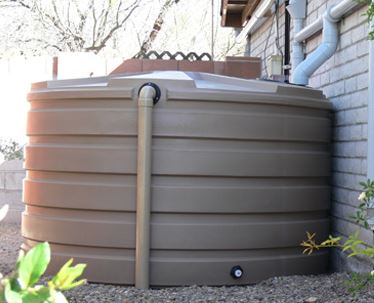Water tanks are a necessity in any home. Residents invest in water storage facilities to maintain a regular supply of water. However, a water tank installation process requires meticulous planning. The first dilemma is choosing the correct size to serve your needs. Tanks come in an array of sizes, by analysing your household water usage and the supply in your area, you can get the right advice on the best tank for your home. A big tank is ideal for areas with irregular water supply or residences that are completely off the water grid. On the other hand, if you have regular water supply, a small tank will serve you well.
The next challenge is deciding whether to have an in-ground water tank or an above ground tank. The decision should be based on your budget, the layout of your home and the size of your tank. Above ground water tanks are good for households with little water requirements and areas that have a regular water supply from boreholes or council water. Underground tanks area popular option for houses that require a huge water reservoir. However, unlike above ground tanks, underground tanks are costly. The installation process is complex and requires professional expertise. One of the most critical decisions to make during the installation process is how far into the ground a water tank should be placed.
The type of tank you want dictates how far into the ground you can bury it. Most underground water tanks are concrete tanks but specially designed poly tanks can also be used as underground tanks. The need to bury tanks ranges from freeing up space around the house to improving the aesthetic appeal of your exterior space. Steel tanks cannot be installed in the ground due to the risk of corrosion but poly tanks don’t face such risks. However, standard poly tanks are not designed to withstand the lateral pressure exerted by the earth. If not supported, the tanks may give in and collapse due to the external pressure.
Regular above ground water tanks can be partially buried in the ground. However, a professional assessment of the location and the soil type in your area must be done. The site preparation involves digging the hole, laying down the foundation and backfilling the hole. For partially buried tanks the recommended depth is one metre. At one metre, regular tanks can withstand the external pressures. Moreover, some councils require an engineer’s assessments for excavations extending beyond one metre. The width of the hole should be 12 inches wider than the base diameter of the water tank. Two tanks buried side by side need separate holes.
The foundation of buried tanks must be sturdy to withstand the weight of the tank. If the foundation is weak, the tank might sink into the ground and be exposed to unbearable external pressures. Concrete is a good material for laying the foundation. Crusher dust is also a good alternative. Once the foundation is set, the tank is positioned at the centre of the hole and filled with water. Filling the tank with water tests the stability and strength of the foundation. Crusher dust and cement powder are used to backfill the hole. It is recommended to compact 75mm to 100mm at a time. Once the hole is filled, a fence should be erected around the tank for safety.
A fully buried water tank needs to be specially built to withstand the external pressures. Some poly tanks are specially built to serve as underground tanks. However, these tanks need a shallow excavation of around 1.3 metres. The tanks come in different sizes with capacities ranging from 1500 litres to 5000 litres. Underground poly tanks are designed to provide a completely hidden water storage solution. They can be installed under driveways, lawns and pathways. The advantage of underground poly tanks is that they are cheap and easy to install.
Concrete underground tanks are the best option for underground water storage. They have the advantage of a large capacity and sturdy structure that can withstand forces exerted by the earth. Because the design of the tanks is modifiable, there is no limit to how deep a concrete water tank can be buried. The thickness of the walls and the stability of the tank determine how deep one can bury a concrete tank. Moreover, since the tanks can hold a large capacity of water the external and internal pressures tend to even out when the tank is full. Concrete underground water tanks are ideal for areas where the overlying weight on the tank is immense. Therefore, if you are looking to set up a water tank under your garage or house go for a concrete tank. They can be buried as deep as you want and size is not a problem.
Read Also:
